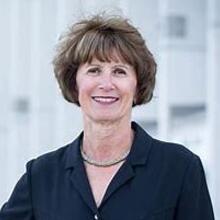Since the revelation in 2002 of sexual abuse cases involving Catholic priests in the United States, over 500 accused priests have been temporarily or permanently removed from ministry. This number is not expected to increase significantly, largely because the abuse-prevention policies and procedures set forth by the United States Conference of Catholic Bishops in 2002 have succeeded. Still, allegations of abuse continue to be received by law enforcement. Canonical, civil and criminal adjudications and findings of these cases can take months or years to resolve, putting on the shoulders of local bishops the challenge of placing these men in appropriate assignments for the foreseeable future.
For accused priests, as well as for those proven to have committed an act of sexual abuse of a minor, removal from public ministry is required by the U.S.C.C.B. Charter for the Protection of Children and Young People (2002). The underlying reason for removal was stated by Pope John Paul II in April 2002: There is no place in the priesthood or religious life for those who would harm the young. The restriction also precludes any man from public ministry who is (or may be) likely to re-offend, and it helps to limit the prospect that he would use the power of his clerical role for personal advantage over a potential victim.
According to the John Jay study, 1.5 percent of alleged cases in which there is a record of investigation were found to have been false accusations. In the research, the term credible accusation is defined not only as what is proven but also includes what cannot be substantiated but is clearly not false. False reporting of sexual abuse by children is very rare.
While removing such priests from ministry is prudent and necessary, it is also essential to provide them with meaningful and time-consuming work, lest they lose the self-esteem required for seeing the process through to completion (either clearing their record of unfounded allegations or undergoing rehabilitation) or more easily yield to temptation during free hours.
It is possible, though difficult, to assign such men to work that contributes to the church’s mission of serving others without placing the offender or alleged offender in a position of unsupervised contact with minors or vulnerable adults.
Roles and Recommendations
What are appropriate roles for accused priests and priests proven to have sexually abused minors? This is a critical and complex question that continues to require extensive thought and discussion by church leaders. Bishops and major superiors may wish to consider the following suggestions for placing such priests.
Look to the experiences of other dioceses and religious communities and societies, some of which have found novel ways to provide meaningful work for the accused priest that utilizes his talents and skills but does not interfere with logical abuse prevention procedures (for example, scholarly research, food programs, adult-focused ministries and education).
Engage local child-abuse prevention specialists, offender-treatment professionals and diocesan review boards to identify assignments that comport with prevention efforts.
Ensure that the priest has adequate means to sustain himself and afford legal representation, as well as psychological support and ongoing treatment, as necessary.
Provide opportunities for the priest to engage with other adults in normal activities, such as athletics, monitored travel, going to museums, the theater and films.
Communicate regularly with an accused priest about his situation. He will naturally be anxious to hear what is involved in the inquiry against him, how long it will likely take and how it is progressing.
Know the priest’s whereabouts for the protection of others and himself.
Be as open as possible with the public about your actions with regard to these men, reassuring all parties that the protection of the young is paramount.
Where possible, expedite the resolution of sexual abuse allegations so as to provide closure for victims, those claiming to be victims, the faith community, accused priests and priest-offenders.
Sustained vigilance is essential to the prevention of abuse, but finding suitable work assignments for priests at risk of re-offending is just as critical; re-offending has taken place in more than one diocese. Without meaningful work, the level of patience required for waiting out an investigation or the self-confidence needed for effective treatment is diminished. And offenders have the time to seek out new victims, making the possibility of future offenses greater.







